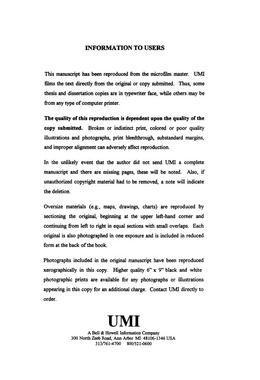| dc.contributor.advisor | Vitt, Laurie J., | en_US |
| dc.contributor.author | Gier, Paul Joseph. | en_US |
| dc.date.accessioned | 2013-08-16T12:29:45Z | |
| dc.date.available | 2013-08-16T12:29:45Z | |
| dc.date.issued | 1997 | en_US |
| dc.identifier.uri | https://hdl.handle.net/11244/5492 | |
| dc.description.abstract | Ctenosaura similis females exhibited extremely overlapping home ranges near burrow sites; D. dorsalis females exhibited moderate levels of home range overlap beneath large shrubs offering cool temperatures. Males of both species capitalized on the clumped distributions of females; in C. similis, each burrow area was defended by a large male whose territory was surrounded by peripheral males. In D. dorsalis, most males defended territories that included at least one female, and the most successful males defended plants with the coolest shade temperatures. Thus, both species exhibited resource-defense polygyny (RDP), and the most spatially limiting resource (burrow sites for C. similis and low-temperature sites for D. dorsalis) had the greatest influence on the mating system. Overall degrees of polygyny and local mate competition were higher in C. similis. | en_US |
| dc.description.abstract | Although both species are sexually dimorphic, C. similis is much more so. Moreover, male C. similis that defended burrow sites had proportionately longer heads than peripheral males, suggesting stronger selection on head length than exists for D. dorsalis, for whom such a relationship was not found. | en_US |
| dc.description.abstract | I investigated the mating systems of the iguanids Ctenosaura similis and Dipsosaurus dorsalis, with the goal of understanding the ecological factors impinging on resource use, mate monopolization, and sexual dimorphism. I also used a meta-analysis to test the hypothesis that the distribution of shelters from predators is an important ecological variable in structuring social systems in the family Iguanidae. | en_US |
| dc.description.abstract | RDP is the commonest mating system in the family Iguanidae; also, most iguanids are ecologically tied to large, permanent shelters that are highly clumped in space. However, non-RDP systems have evolved independently in three lineages; all of these transitions occured in taxa in which shelter has become less limiting. The nature of sexual dimorphism does not correspond closely either with mating systems or with degree of clumping of shelter. | en_US |
| dc.description.abstract | Temperature was relatively uniform throughout the forested habitat of C. similis, and burrows and food sources were highly clumped in space. In contrast, the xeric habitat of D. dorsalis exhibited great variation in temperature and food, with relatively even burrow distribution. | en_US |
| dc.format.extent | xiii, 146 leaves : | en_US |
| dc.subject | Iguanas. | en_US |
| dc.subject | Sexual selection in animals. | en_US |
| dc.subject | Iguanas Ecology. | en_US |
| dc.subject | Biology, Ecology. | en_US |
| dc.subject | Biology, Zoology. | en_US |
| dc.title | Iguanid mating systems: Ecological causes and sexual selection consequences. | en_US |
| dc.type | Thesis | en_US |
| dc.thesis.degree | Ph.D. | en_US |
| dc.thesis.degreeDiscipline | Department of Biology | en_US |
| dc.note | Source: Dissertation Abstracts International, Volume: 58-03, Section: B, page: 1155. | en_US |
| dc.note | Adviser: Laurie J. Vitt. | en_US |
| ou.identifier | (UMI)AAI9728712 | en_US |
| ou.group | College of Arts and Sciences::Department of Biology | |
